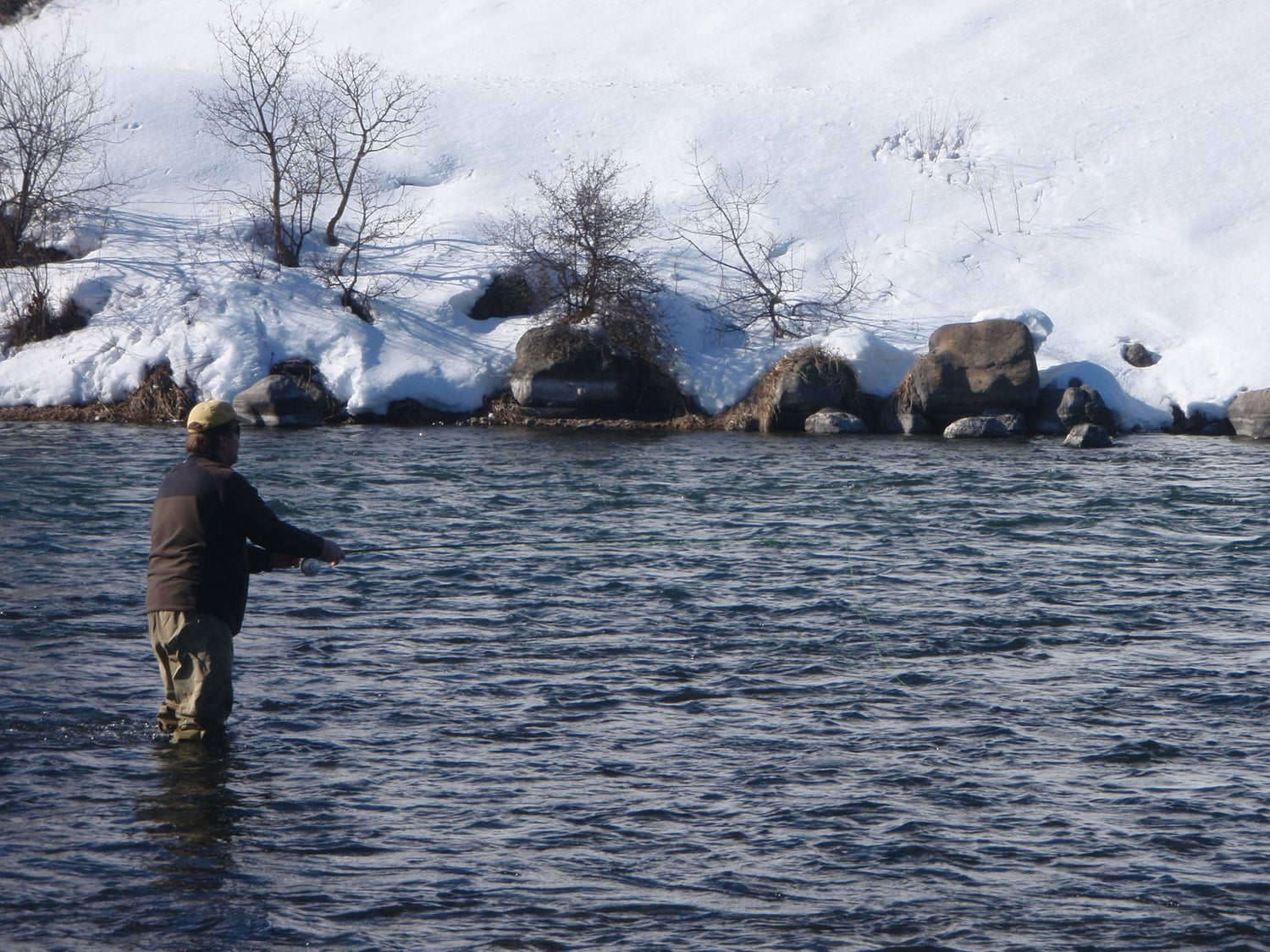
How to Approach Winter Fly Fishing
How to Approach Winter Fly Fishing
As winter grips much of trout country, many anglers are content to simply put the fly gear in the closet and wait for some spring sun and warmer weather. But winter fly fishing can be a great way to enjoy the outdoors and catch some fish. Obviously, it requires a different approach, and preparation is important. But, if you do it right, you can have a very productive day on the water and be very comfortable at the same time. Consider these important tips:
Dress in Layers. The key to staying warm in cold weather is to dress in layers. This will allow you to adjust your clothing as needed to stay comfortable. Start with a base layer of moisture- wicking fabric, such as merino wool or synthetic material [opportunity here for product placement link]. Then, add a mid-layer of insulation, such as a fleece jacket [product link] or sweater. Finally, top it off with a waterproof and windproof outer layer [product link], such as a Gore-Tex jacket and pants. Many anglers wear gloves when fishing in the winter — this is great, until they get wet. Think carefully about gloves. Often, a better option is just to have some hand warmers in the pockets of your jacket.
Use the Right Gear. In addition to dressing properly, you'll also need to use the right gear for winter fly fishing. Waders will be an absolute necessity, as will wading boots. If you’re wading around icy stream banks, consider metal studs. Felt might seem like a good option, but if you’re wading rivers that are snowbound, the snow will build up on felt soles. Most fly rods will function just fine in cold weather, but you’ll likely need to downsize a bit when it comes to flies. Consider using smaller nymphs under indicators, or give Euro-nymphing a try — the latter can be deadly in the winter. Try flies that get deep, and think about a double-nymph rig that features a top fly
that’s going to be easier for fish to see (think Prince Nymph of Copper John), and trail it with something small and subtle, like a Zebra Midge or a Perdigon.
Find the Right Location. Not all bodies of water are suitable for winter fly fishing. Look for areas on rivers and streams that are sheltered from the wind and have deep pools where fish can congregate. You may also want to consider fishing in the middle of the day when the sun is highest and the water is warmest.
Be Patient. Fish are less active in cold water, so you'll need to be patient when winter fly fishing. Manage your expectations. That’s not to say that winter fishing can’t be very good, but, as a rule, the fishing might be a bit slower than what you might normally expect. Embrace the experience of being outdoors and the challenge of catching fish in difficult conditions.
Be Safe. Winter fly fishing can be dangerous, so it's important to take precautions. Always let someone know where you're going and when you expect to be back. If you have a fishing vest with an inflatable compartment, this is a good option, as is a wading staff and a wading belt. As always, be aware of the weather conditions. Extremely cold weather can be dangerous.
Products
View all
